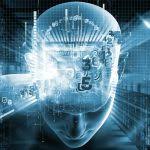AI Robots Are Becoming Too Real a Glimpse into 2024’s Technological Revolution.
2024 has undoubtedly been a transformative year for the realms of artificial intelligence (AI) and robotics, marking an era where the boundaries once defined between humans and machines are not just blurring, they’re evaporating. As we observed incredible advancements in technology, the emergence of robots that possess striking human-like features and AI systems that operate with remarkable intelligence has brought both awe and apprehension. In this blog post, we will explore the transformational developments of 2024 and the profound implications they present for our future.
Human-like Robots: The New Standards
One of the most shocking developments this year has been the introduction of humanoid robots that are almost starting to look like humans. These advancements are not merely superficial; they encompass improvements in biomechanics, vocal accuracy, and emotional intelligence. It’s no longer enough for a robot to mimic human appearance; they now exhibit nuanced behaviors, such as eye contact, facial expressions, and even the ability to hold empathetic conversations.
Companies like Synthesia and Engineered Arts have launched models that can seamlessly integrate into our daily lives. From engaging in customer service roles to providing companionship, these robots are crafted with an uncanny realism that challenges our perception of what it means to be human. But as they become part of our homes and workplaces, we must confront an unsettling question: What happens when our emotional and social lives intertwine with machines that can mimic our very nature?
AI Capabilities: Rapid Evolution
The developments in AI are equally staggering. AI systems in 2024 have evolved at a pace that might give some a sense of whiplash. These systems can learn from vast data sets in real-time, make decisions, and even predict human behaviors with astounding accuracy. Deep learning algorithms are now capable of creating art, writing stories, and even composing music that rivals human creativity.
However, with these advancements come significant ethical dilemmas. The autonomy afforded to AI systems raises critical questions about accountability, transparency, and bias. As AI continues to shape industries from healthcare to finance and beyond society must grapple with the implications of relinquishing certain levels of control to algorithms that can outthink us.
Redefining Relationships and Roles
As robots become engrained in both professional environments and personal circles, we must reevaluate our relationships with these entities. The companionship of a robot may provide comfort to the lonely, while a robot’s efficiency in the workplace may offer unprecedented productivity. Yet, we should also remain vigilant about the potential for dependency.
In some sectors, these humanoid robots and AI systems are already displacing human workers, creating economic and social challenges. The traditional workforce is undergoing a seismic shift, and as automation rises, we must consider how to equip individuals with the skills needed to thrive in a landscape dominated by robots and intelligent systems.
The Road Ahead: Navigating Uncharted Waters
As we progress further into this decade, the question is not only about how far we can push the boundaries of AI and robotics but what it means for our future as a species. Will we find a balance that allows technology to enhance our lives without undermining our humanity? As designers and developers create increasingly lifelike robots, the responsibility of ensuring ethical frameworks, safety measures, and human-centric design becomes more critical than ever.
Furthermore, the implications touch broader societal principles, including privacy concerns. If robots can learn from us and adapt to our preferences, where do we draw the line on data collection and surveillance? Who owns the data these machines gather as they strive to better serve us?
Conclusion: A Call for Reflection
The advancements of 2024 have been nothing short of astounding, revealing a future that was once confined to the realm of science fiction. The challenge lies in how we, as a society, respond to these breathtaking achievements. It is essential to engage in meaningful discussions about the ethical, emotional, and societal ramifications of living alongside machines that are becoming too real.
As we stand at this crossroads of technology and humanity, we must reflect deeply on our values, ensuring that as we innovate, we do not lose sight of what makes us uniquely human. The future may be bright, but it is imperative that we navigate this journey with caution, wisdom, and an unwavering commitment to our collective well-being.






